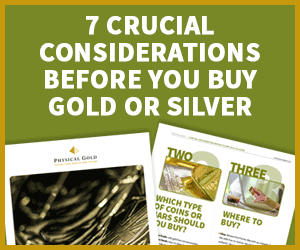Gold and Silver Investment Jargon
Complicated jargon exists everywhere in life. Within the investment world, jargon can sometimes prevent you from understanding the details of the investment, or cloud key facts.
Some terminology stems from the historical use of words, while others seem convenient for financial advisors to validate their existence to explain these complications.
At Physical Gold, we believe in stripping back jargon to simplify what should really be very straightforward assets – gold and silver.
This video unravels a few select pieces of jargon which crop up time and again. For the full list of investment jargon busting, click here.
1. Bullion
This is one of the most widely used terms in the market but can refer to a number of things. Some people use the term as a blanket expression for non-numismatic gold. So any low-priced gold coins and bars. This tends to be when the price is the focus and suits those wishing to avoid paying premiums for more valuable older coins.
It can also be used to explain a certain type of coin production. Most of the main gold investment coins will be produced to a number of finishes, each with their corresponding price. Bullion finish is the most basic and cheapest finish, so is targeted at the investment market, where quantity and price are the primary focus. In contrast, proof finish coins, are struck 2-3 times when minted and offer a more detailed, albeit expensive finish.
Finally, the term bullion can be used to refer to gold or silver bars. Bullion is used interchangeably with bars and wafers to focus on this area of the market rather than coins.
My recommendation is to ask questions if it’s unclear which of these meanings is being indicated.
2. Alloy, purity, carat
Very simply, alloy denotes the mix of metals within a 

Alloys are used to toughen up a coin and minimise scratches. Some of the most common alloys in popular coins such as Sovereigns will be silver and copper.
One of the biggest misconceptions with carats and purity is that 24 carat coins are far better and more valuable than 22 carats. Looking at the Gold and Silver Britannia coin is a useful example.
Up until 2013, the Britannia was produced as a 22 carat coin. While it weighed around 34g in total, the gold or silver content was 31.103g (1oz). Coins produced after 2013 were minted as 24 carat coins. The newer coins still only contain 31.103g of pure precious metal and that is now also their total weight. So in other words, both coin purities still contained exactly 1oz of pure gold or silver.
3. Face Value
While this term is simpler to understand, its implications are crucial to precious metals investors.
When a coin benefits from having a face value, that means that the mint who produced the coin have actually allocated a face value in that country’s currency to the coin. This face value will be shown either on the front or back of the coin. In theory, that means you are legally allowed to walk into a shop in the relevant country and use the gold or silver coin to buy goods up to the face value.
Now, this may sound ridiculous because the face value of a Gold Britannia, for instance, is £100, while the coin’s gold content is worth ten times that. This is where the implications come in useful.
Any coin with a face value cannot be taxed for capital gains for residents of that country. In other words, if a UK investor buys £20,000 of Britannia coins and sells them 5 years later for £50,000, their profit of £30,000 is completely tax free!
4. Segregated
Next up is a term used in the storage of gold and silver. If you choose not to physically hold your coins or bars, then many dealers can offer storage solutions. But beware, not all solutions are the same.
If gold or silver is segregated, it means that it’s legally ring-fenced as yours. That means it isn’t mixed in as a pooled investment with other investors’ gold and crucially cannot be touched by any counterparty.
For investors seeking absolute security and minimal risk, segregated storage is the only way.
5. Premium
This final piece of investment jargon is bandied around when talking about the price of physical gold and silver. Rather than indicating a top end item, it refers to the spread over the gold or silver spot price of various coins and bars.
It’s important to understand that when buying any gold or silver, whether electronic or physical, you will always buy at a premium over the live spot price.
That premium varies according to a few factors.
Firstly, coins and bars trade at a higher premium than electronic gold and silver ETFs as they have to encompass production, design and delivery costs.
Secondly, the type of coin or bar will dictate the level of premium. Brand new mass-produced bullion coins are attainable at lower premiums, then rarer old gold coins.
Finally, quantity plays a large role in the premium. Buying one coin will cost a higher premium than buying 100 coins. Similarly, buying a small 5g gold bar will cost a higher premium than a huge 1kg bar.
Our team are here to make gold and silver simple
So there, you have it, 5 key pieces of jargon busted for you. Any dealer who cannot explain these, shouldn’t be used. Websites should clearly display live prices for various quantities of coins and bars, and each product should have a comprehensive description so you know what you’re buying. If you found this video helpful, be sure to check out 20 of our best video guides.
If you have questions regarding specific gold & silver investment jargon or are seeking guidance on how to invest, then our expert team are here to help. You can either call us on 020 7060 9992, engage on live chat or leave a call back request on our contact us page.



